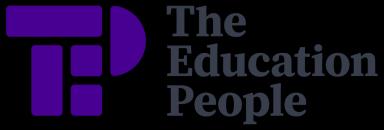
‘Now the whole school is reading’: supporting struggling readers in secondary school
https://www.gov.uk/government/publications/now-the-whole-school-is-reading-supporting-struggling-readers-in-secondary-school/now-the-whole-school-is-readingsupporting-struggling-readers-in-secondary-school?Ofsted,%2031st%20October%202022
Why reading matters to secondary school pupils?
“The ability to read is a fundamental skill”.
• 16% of adults in England have poor literacy, with significant effects on their lives, including fewer job opportunities. They may also struggle to understand labels, read timetables, etc.
• A quarter of young offenders have a reading age of lower than seven.
• One quarter of 11-year-olds do not meet the expected standard for reading at primary school – this is the threshold for functional literacy in adulthood.
• Poor reading at primary school is exacerbated in secondary: only 10% of disadvantaged children who leave primary below the expected standard get a 4 or higher at GCSE.
Background
“It is important that all pupils get the specific teaching they need, alongside a well-thought-out reading curriculum, so that they can read well before they leave school.”
• Pupils need both word recognition and language comprehension in order to be able to read. Most struggling readers in secondary school can decode words, but not fluently enough to enable them to comprehend what they are reading.
• Decoding. In England, children are taught word recognition through synthetic phonics in Key Stage 1. They learn how the 26 letters in the English language make up the approx. 44 phonemes we use in our language.
• Fluency. Once pupils are able to decode, they need practice in order to be able to read fluently – with accuracy, pace and expression. If pupils cannot do this there is a danger that they will not have sufficient working memory to understand what they are reading.
The types of reading required in secondary school are more challenging than that of primary school and weaker readers often do not have the fluency to read them successfully.
• Help for older struggling readers. There are a number of possible reasons a pupil struggles to read – they cannot all be supported by the same strategy.
• Identifying gaps. A reading age test isn’t enough – schools must diagnose whether problems are related to word recognition (decoding and fluency), language comprehension, or a mixture of both.
Based on the findings of the report, successful schools have:
• Early screening of all pupils.
• Further diagnostic assessment of pupils who are identified as struggling.
• Additional help for struggling readers based on specific need.
• Trained staff to deliver reading interventions.
• Strategies to monitor the success of interventions.
• A coherent whole-school strategy which is prioritised by senior leaders.
Main findings on the report
In successful schools:
Senior leaders prioritise reading
• Additional, bespoke help is in place for struggling readers.
• Staff who teach reading are trained appropriately.
• There is a whole-school strategy for reading.
• All staff in the school raise the visibility of reading.
• Interventions to support struggling readers are prioritised, sometimes over other subjects and sometimes by adding extra teaching time for weaker readers.
“In schools that get safeguarding right, leaders create a culture that safeguarding is “everyone’s business, all of the time”. In this [successful] school, leaders seem to have done the same with reading. Everyone we spoke to appeared to view teaching pupils to read – and to read well, with confidence and fluency – in this way.”
There is accurate identification of gaps in reading knowledge
• All new pupils have a reading screening
• For pupils identified as struggling, further diagnostic tests determine which aspect of reading is causing a barrier, and interventions are designed as a result.
"[In successful schools] the systematic use of detailed, diagnostic assessments gave a clear picture of the strengths and weaknesses of individual struggling readers.”
Staff responsible for teaching reading are trained
• Staff responsible for specific interventions or programmes are trained to deliver them; for example:
- Readers struggling with decoding are taught using phonics schemes specifically designed for older readers
- Readers struggling with fluency are supported by trained pair readers who model fluent and confident reading aloud
• These trained staff share their expertise internally, including with subject teachers.
Leaders share information about reading with staff
• Teachers and staff know which pupils are getting additional help
• This information is used by teachers in their lesson planning
There are procedures in place to monitor interventions and their impact
• Regular assessments are used to monitor impact and tweak interventions if necessary
• Reading programmes are evaluated regularly for their impact
“Using evidence from classrooms as well as data from interventions gave schools additional evidence of how specialised reading programmes and additional teaching were having an impact in the classroom.”
Other strategies
• Promoted reading for pleasure – ‘currently reading’; informal conversations about books.
• Librarians – helping pupils find books that interest them, supporting struggling readers.
